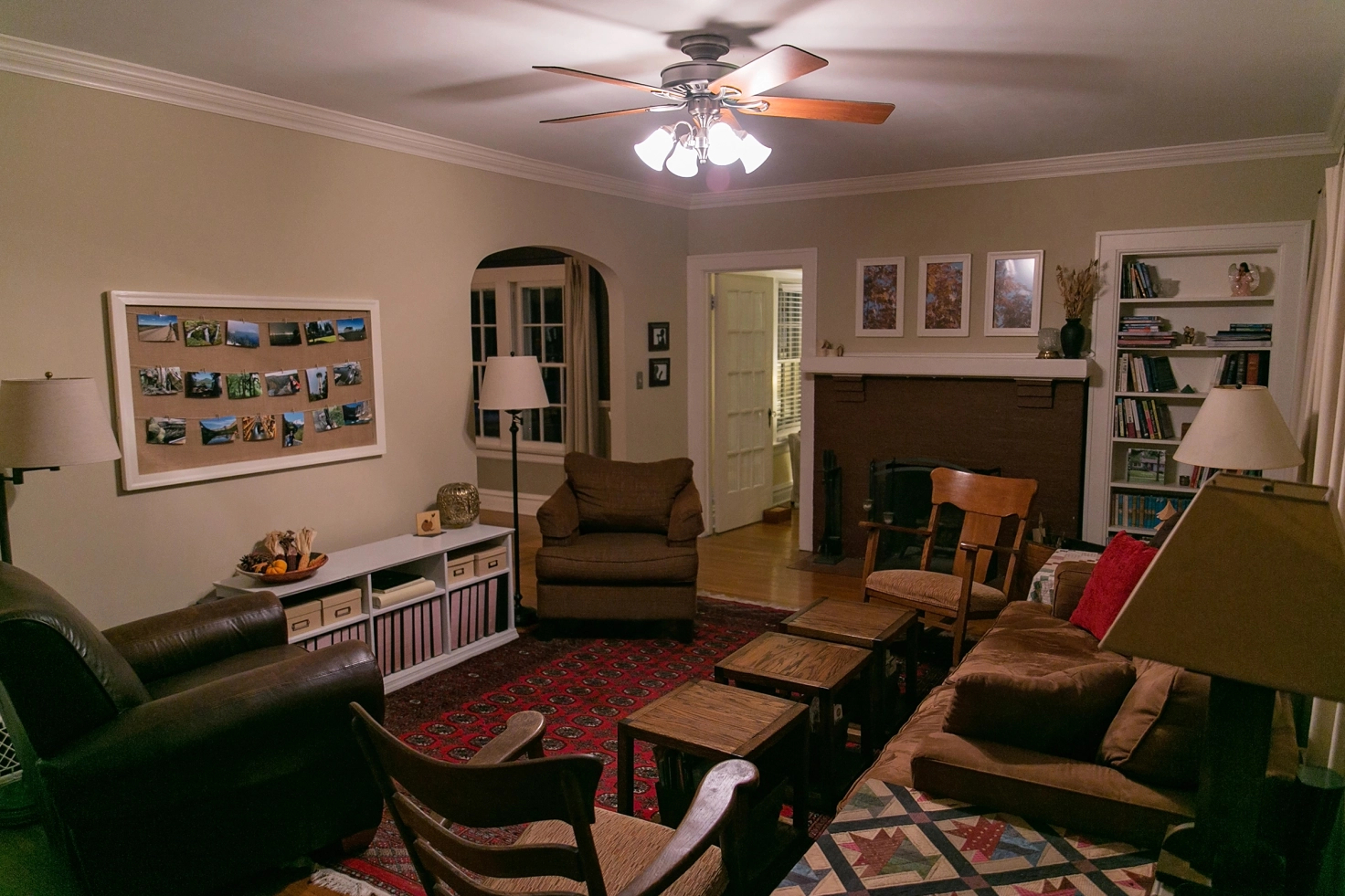CFLS: Ceiling Fan Light Syndrome. Great for vacuuming the carpet, awful for everything else.
Everyone uses their living rooms differently, which means everyone’s idea of great lighting will be different. In your living or family room you might watch television, read books, play games, relax on the couch, surf the internet on your iPad, knit, snack, do homework, play with the pets, and even nap in the recliner. If you have more than one living space their uses might be different- growing up our living room was for entertaining adult guests (which meant it sat largely unused by us kids) while the family room was for rough housing, reading by the fire, playing games, or working on a puzzle. The best lighting for watching television is quite different than what you might want for reading; back-lit devices like iPads require lower levels of light than doing math homework on paper.
The houses my wife and I tend to buy are typically older homes in traditional neighborhoods. That means they have wonderful “character,” which is code for saying that the fireplace, built-ins, and large windows at least partially make up for the lack of electrical outlets and the prevalence of drafty windows and dingy basements. In the case of our current home, the living room featured not one but two receptacles and the nearly ubiquitous ceiling-fan-with-light combination, and nothing else.
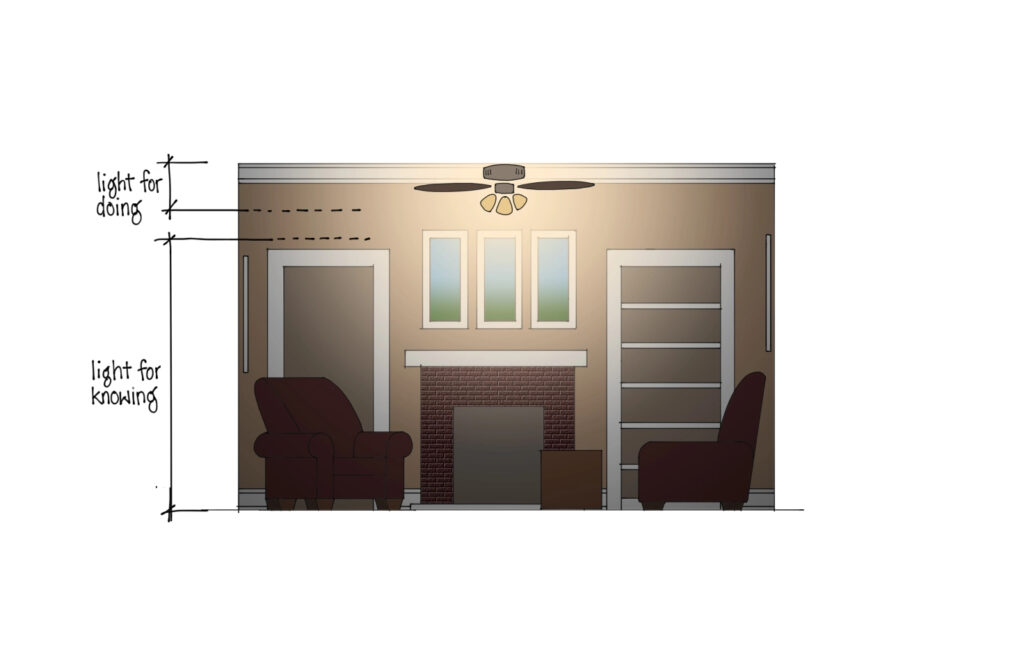
In this room, the ceiling fan light must go. Light in the middle of the room is okay in a dining room, but is less useful in almost every other residential space. For some reason, most ceiling fans feature three or four glass or metal shades holding light bulbs that point out into the room, more like a fire sprinkler than anything useful. In our living room, we never turn these on- the glare that comes from looking directly into a bare lightbulb closes our eye’s iris, which makes it even harder to see what we’re doing. The constant barrage of light from a ceiling fan can give you a headache and cause eyestrain, neither of which is particularly relaxing. In fact, the quality of light from most ceiling fans is closer to the interrogation light used in crime dramas than to anything that will make us comfortable.
So, before you start adding in additional layers of light, make plans to remove those that are harmful. Perhaps the only good thing about a ceiling fan light is that you can use it to light the room while your electrician does the work to get better lighting.
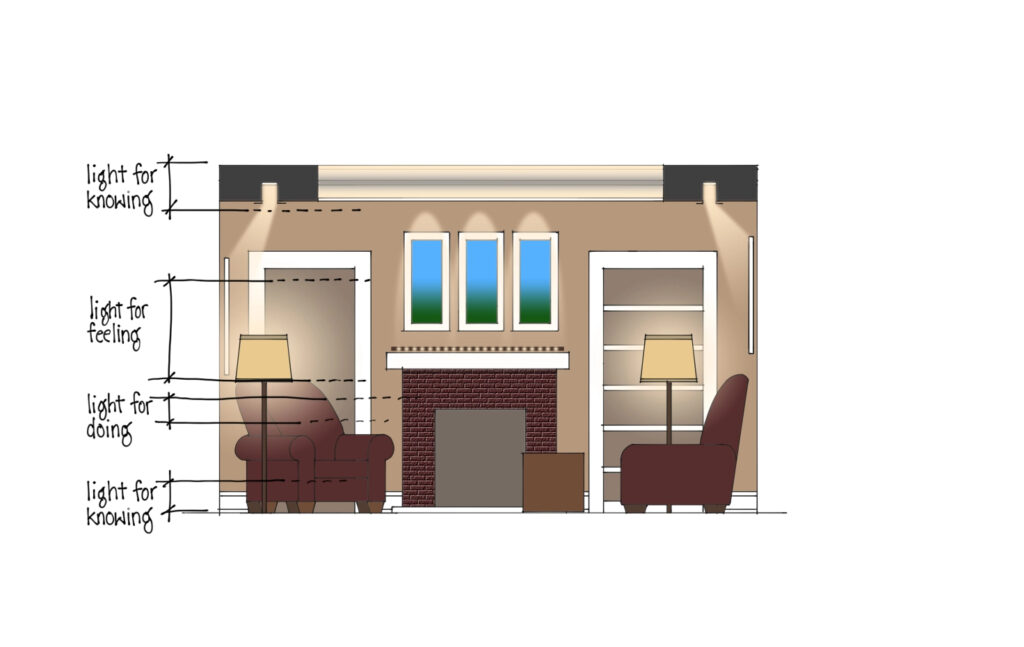
Once the ceiling fan light is gone (or turned off), sprinkle lights or lamps throughout the living room wherever higher levels of light are needed for doing things, such as by a favorite reading chair or small table. Floor and table lamps, provided they are the correct height (see diagram), can be great for boosting light on books, magazines, knitting, and homework. In this example living room, four lamps (one by each chair) provide almost all the light for doing needed in the space. Lamps will put the brighter light where it is needed for more detailed work while casting softer light out where the floor needs vacuumed.
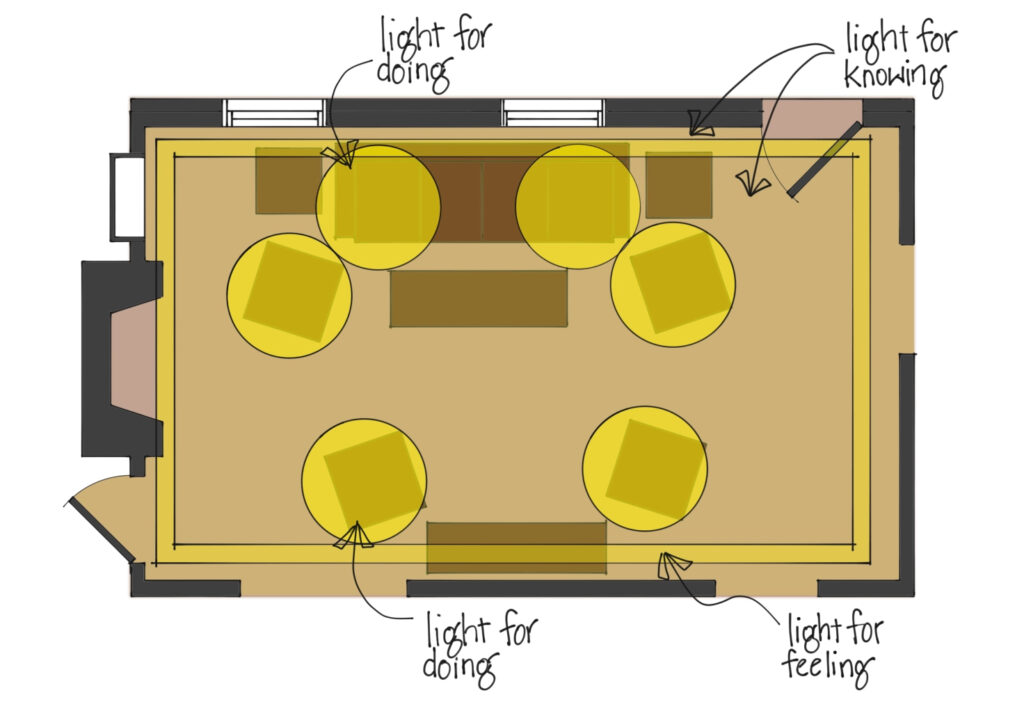
Good table and floor lamps can also provide light for knowing by means of the light which goes out of the top of the shade and bounces off the ceiling. In fact, most smaller living rooms can be well-lit by three or four good lamps alone, which even provide light out of their shades that helps us feel good. It does not have to be hard, expensive, or destructive to get better light for doing in most of your rooms.
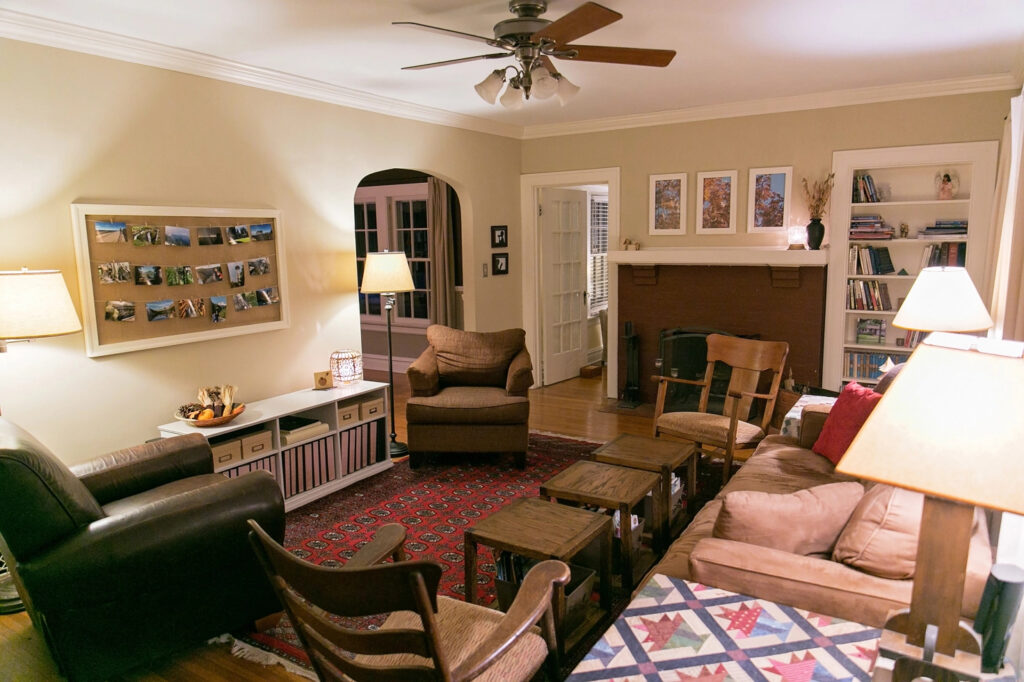
The same living room with a few lamps plugged in to reduce the symptoms of CFLS. Ahh….
